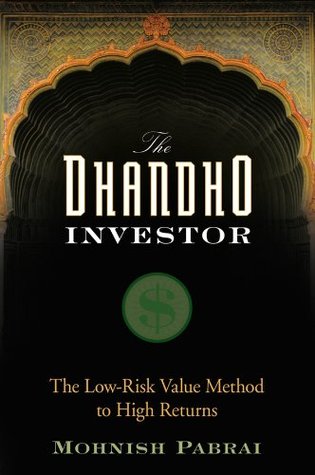More on this book
Community
Kindle Notes & Highlights
Read between
February 14 - February 21, 2018
Heads, I win; tails, I don’t lose much!
We see change as the enemy of investments ... so we look for the absence of change. We don’t like to lose money. Capitalism is pretty brutal. We look for mundane products that everyone needs.1 —Warren Buffett
Never count on making a good sale. Have the purchase price be so attractive that even a mediocre sale gives good results.2 —Warren Buffett
The entrance strategy is actually more important than the exit strategy.3 —Eddie Lampert
Be fearful when others are greedy. Be greedy when others are fearful.4
The key to investing is not assessing how much an industry is going to affect society, or how much it will grow, but rather determining the competitive advantage of any given company and, above all, the durability of that advantage.
And that’s the Dhandho framework. To summarize: • Invest in existing businesses. • Invest in simple businesses. • Invest in distressed businesses in distressed industries. • Invest in businesses with durable moats. • Few bets, big bets, and infrequent bets. • Fixate on arbitrage. • Margin of safety—always. • Invest in low-risk, high-uncertainty businesses. • Invest in the copycats rather than the innovators.
How do we know when a business has a hidden moat and what that moat is? The answer is usually visible from looking at its financial statements. Good businesses with good moats, like our barber, generate high returns on invested capital.
When an investor approaches the equity markets, it has to be with the same mind-set that Thorp had when he played blackjack: if the odds are overwhelmingly in your favor, bet heavily.
Using the Kelly Formula may lead to relatively high volatility. The formula optimizes just one variable—the maximization of wealth in the least amount of time.
The key to investing is not assessing how much an industry is going to affect society, or how much it will grow, but rather determining the competitive advantage of any given company and, above all, the durability of that advantage.4 —Warren Buffett
Whenever I make investments, I assume that the gap is highly likely to close in three years or less. My own experience as a professional investor over the past seven years has been that the vast majority of gaps close in under 18 months.
Papa Patel, Manilal, Branson, Graham, Munger, and Buffett have always fixated on a large margin of safety and gone to great lengths to seek out low-risk, high-return bets. It is truly fortune’s formula.
When extreme fear sets in, there is likely to be irrational behavior. In that situation, the stock market resembles a theater that is filled to capacity. Someone sees some smoke and yells “Fire, Fire!” There is a mad rush for the exits. In the theater called the stock market, you can only exit if someone else buys your seat—each share has to be held by someone! If there is a mass rush to leave the burning theater, what price do you think these seats would go for? The trick is to only buy seats in those theaters where there is a mass exodus and you know that there is no real fire, or it’s
...more
Read voraciously and wait patiently, and from time to time these amazing bets will present themselves.
In seeking to make investments in the public equity markets, ignore the innovators. Always seek out businesses run by people who have demonstrated their ability to repeatedly lift and scale.
seven questions that an investor ought to be thinking about before entering any stock market chakravyuh: 1. Is it a business I understand very well—squarely within my circle of competence? 2. Do I know the intrinsic value of the business today and, with a high degree of confidence, how it is likely to change over the next few years? 3. Is the business priced at a large discount to its intrinsic value today and in two to three years? Over 50 percent? 4. Would I be willing to invest a large part of my net worth into this business? 5. Is the downside minimal? 6. Does the business have a moat?
...more
A critical rule of chakravyuh traversal is that any stock that you buy cannot be sold at a loss within two to three years of buying it unless you can say with a high degree of certainty that current intrinsic value is less than the current price the market is offering.
Archery is all about being singularly focused on the target. If the archer can’t fixate on just the target, success is likely to be elusive. That was Dronacharya’s lesson for the day for his students.
Do not make the fatal mistake of looking at five businesses at once. Learn all you can about the business that jumps out for whatever reason and fixate solely on it. Once you’re at the finish line with your analysis, only then look at the broader circle of competence.
You give but little when you give of your possessions. It is when you give of yourself that you truly give.
We cannot change the world, but we can improve this world for one person, ten people, a hundred people, and maybe even a few thousand people.


